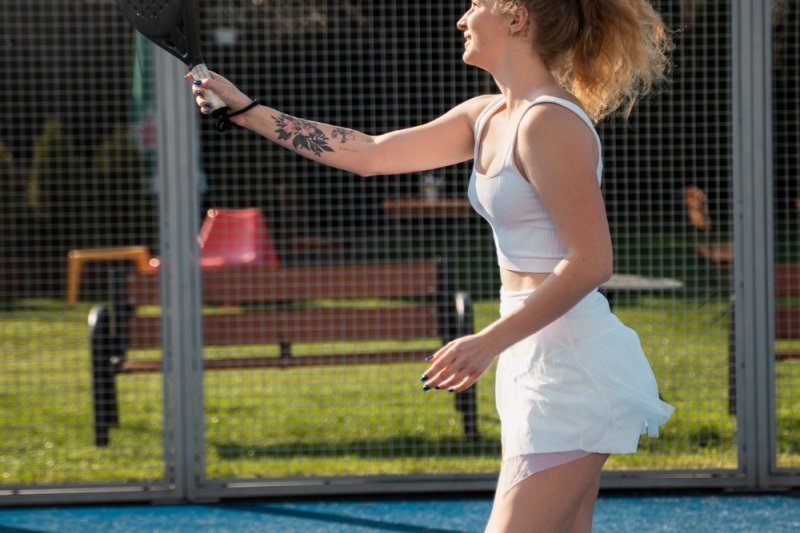Padel and tennis may look similar, but their rules, equipment, and gameplay differ significantly. Understanding these differences is essential for players and sports enthusiasts.
Padel is a racket sport played on an enclosed court with walls, while tennis is played on an open court with a net.
Knowing these key distinctions helps players choose the right sport for their interests and skill levels. Let's dive deeper.
How is padel tennis different from tennis?
While padel and tennis share common elements, their rules and playing styles vary significantly.
Padel is played on a smaller enclosed court using a perforated racket1, whereas tennis is played on a larger open court with a strung racket.
Key Differences Between Padel and Tennis
| Feature | Padel | Tennis |
|---|---|---|
| Court Size | 20m x 10m | 23.77m x 8.23m (singles) / 10.97m (doubles) |
| Walls | Glass & metal mesh2 | No walls |
| Racket | Solid, perforated | Strung racket |
| Ball | Lower pressure | Standard tennis ball |
| Serving | Underhand | Overhand |
| Scoring | Similar to tennis | Standard tennis scoring |
Padel's enclosed walls allow for rebounds, making rallies longer and more strategic, while tennis relies on precision and power.
What is the difference between padel and Real tennis3?
Real tennis, also known as "court tennis" or "royal tennis," is a historic sport distinct from modern padel and lawn tennis.
Padel is a modern sport played in an enclosed court with walls, while Real tennis is an ancient game played on asymmetrical courts with complex rules.
Padel vs. Real Tennis
| Feature | Padel | Real Tennis |
|---|---|---|
| Origin | 1969, Mexico | 16th century, Europe |
| Court Shape | Symmetrical | Asymmetrical |
| Walls | Enclosed with glass | Stone or wooden walls |
| Racket | Solid, perforated | Wooden, slightly curved |
| Ball | Similar to tennis | Hand-stitched, firmer |
Real tennis courts are rare and primarily found in historic clubs, whereas padel is growing rapidly worldwide.
What is padel called in English?
Padel retains its name in English but is sometimes referred to as paddle tennis4 to distinguish it from other racket sports.
Padel is called "padel" in English, but some people mistakenly refer to it as paddle tennis4, which is a different sport.
Common Misconceptions
| Term | Meaning |
|---|---|
| Padel | The correct name for the sport played on enclosed courts with glass walls. |
| Paddle Tennis | A different sport played on a smaller court with no walls, mostly in the U.S. |
| Platform Tennis | A cold-weather sport played on a raised, heated platform. |
Using the correct terminology helps avoid confusion between padel and similar-sounding sports.
Can you play pickleball5 on a padel court?
Pickleball and padel have different court sizes and net heights, making adaptation possible but not ideal.
You can play pickleball on a padel court with modifications, but the dimensions and surface are not optimized for pickleball.
Differences Between Padel and Pickleball Courts
| Feature | Padel Court | Pickleball Court |
|---|---|---|
| Size | 20m x 10m | 13.41m x 6.1m |
| Net Height | 0.88m (center) | 0.86m (center) |
| Surface | Artificial turf or concrete | Hard court or asphalt |
| Walls | Enclosed with glass and mesh | No walls |
Pickleball can be played on a padel court if temporary lines are marked, but the ball bounce and gameplay experience will differ.
Conclusion
Padel differs from tennis in court size, walls, rackets, and gameplay. It should not be confused with Real tennis or paddle tennis.While pickleball can be played on a padel court, it is not an ideal fit.
-
Understand the unique design and benefits of using a perforated racket in padel. ↩
-
Explore why glass & metal mesh walls are essential in padel court design. ↩
-
Learn about Real tennis history and its distinctive court features. ↩
-
Clarify common confusion between padel and paddle tennis. ↩ ↩
-
Discover the rules and gameplay differences of pickleball. ↩









